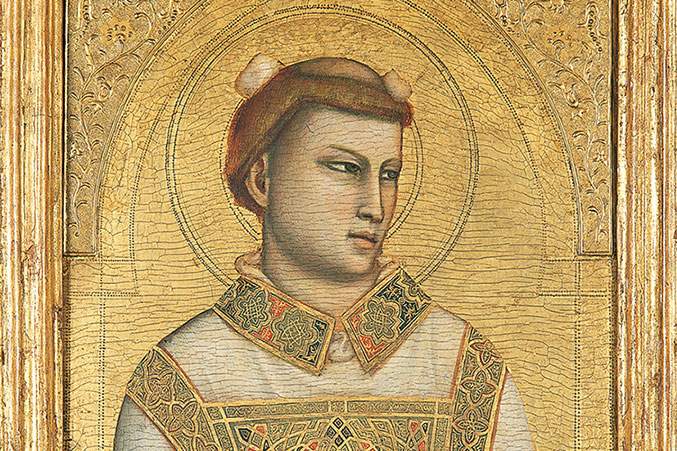From October 2 to January 23, 2022, the “Amedeo Lia” Museum of La Spezia is hosting the exhibition Dante and Giotto. Dialogue and suggestion, curated by Andrea Marmori and Francesca Giorgi. Promoted by the Municipality of La Spezia, the exhibition is part of the celebrations for the 700th anniversary of the death of Dante Alighieri, comparing the literary production of the Supreme Poet, the foundation of the development of Italian language and culture, and contemporary figurative texts, where Giotto, present in the La Spezia museum with the Saint Stephen on loan from the Horne Museum in Florence, is the champion of a slow but disruptive revolution that brings the image to speak universal words.
The exhibition kicks off with exceptional paintings, from Florence and Castefiorentino: Cimabue’s Madonna and Child, with the more than likely intervention of the young Giotto (the work has in fact been the subject of heated critical debate: it has also been discussed in these pages), and, as anticipated, the Saint Stephen executed by Giotto in the years of his full maturity, between 1320 and 1325, when at the same time he was active illustrating the events of Saint Francis in the Bardi Chapel in Santa Croce. Associated with these are a considerable nucleus of paintings with a gold background, the execution of which takes place in the years of Dante’s and Giotto’s biographical vicissitudes, from the Permanent Collection, starting with the Lamentation of Lippo di Benivieni (to whom a current exhibition in Montespertoli is dedicated), completed in Florence at the end of the 13th century, and ending with the melancholy St. John in the Desert by the refined Bernardo Daddi, one of Giotto’s best pupils.
Also on display in the exhibition are sontuari objects and illuminated pages that offer an opportunity to understand what reverberations Giotto’s revolution did in fact have, as is well demonstrated by Pacino di Bonaguida’s folio, in which a search for naturalness and expressive vigor seem indebted to the expansive and relaxed rhythms of Giotto’s Peruzzi Chapel. Also reinforcing the discourse come the library materials from the Mazzini Library, which attest to the publishing fortune of Dante’s work and the development of the studies indefatigably devoted to it, as is well illustrated by Giovanni Sforza’s manuscript concerning Dante’s presence in Lunigiana, confirmed not only by the multiple citations in the Commedia, but also by documents that are often no longer consultable because they have been lost, known only thanks to these timely as well as irreplaceable records.
“Giotto’s paintings that can move from the museums they belong to,” declares the Mayor of La Spezia, Pierluigi Peracchini, “can be counted on the fingers of one hand, and it is a great pride for the City of La Spezia to have organized an exhibition precisely on the greatest of the fourteenth century. More and more our ’little Louvre’ is valued with extraordinary exhibitions: the dialogue with Dante is then an opportunity to highlight our library heritage as well.”
The exhibition will be open from Oct. 2, a day when it will be open to the public free of charge with limited admission according to current regulations, and will remain open until Jan. 23, 2022, Tuesday through Sunday 10 a.m. to 6 p.m. Single ticket to visit exhibition and museum: full price € 8.00, reduced € 7.00. During the exhibition there will be in-depth talks with specialists in the field, appointments aimed at the adult public and workshops for children and young people. For information: Museo Civico “Amedeo Lia” (Via Prione, 234), Tel. 0187 727220, museolia@comune.sp.it, www.museolia.it.
Pictured is a detail of Giotto’s Saint Stephen.
 |
| La Spezia, Giotto and Dante's relationship evoked by great masterpieces on display |
Warning: the translation into English of the original Italian article was created using automatic tools. We undertake to review all articles, but we do not guarantee the total absence of inaccuracies in the translation due to the program. You can find the original by clicking on the ITA button. If you find any mistake,please contact us.